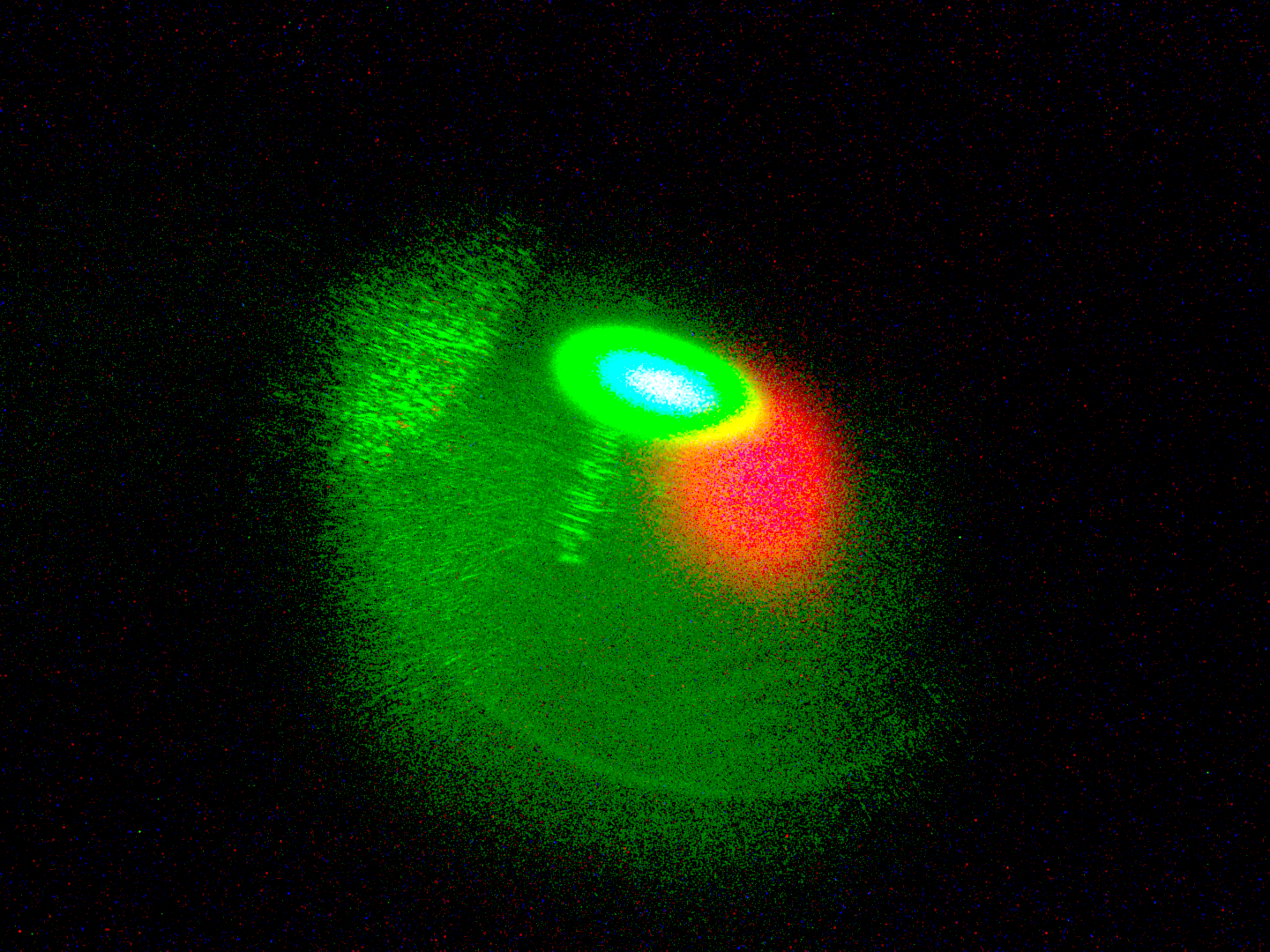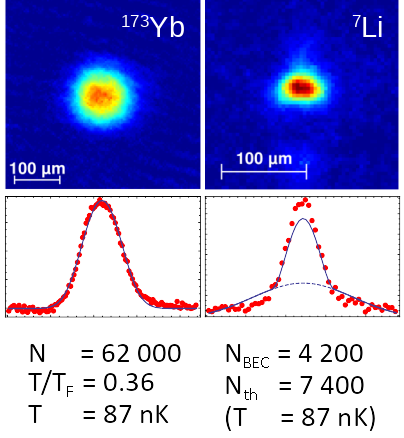



Experiments with ultracold atoms are by now an established and important tool to study and understand the world around us. Especially in an approach called “quantum simulation” we can take important and complex concepts found in nature – such as, for example, crystal lattice structures – and recreate them in an idealized fashion in the experiment. This approach allows us to focus on relevant key aspects and to understand those in detail.
While experiments with a single atomic species already allow a great wealth of research, they are inherently limited in their scope of simulation targets. In introducing a second species it becomes also possible to study the interaction between different components of, for example, a lattice structure and we enter the realm of impurity physics: Materials in nature seldom are as perfect as we recreate them in the laboratory and it is more often than not these imperfections and “dirt effects” that give rise to specific and sometimes quite desirable properties. An important example is the quest for high-temperature superconductors where the key mechanism is believed to lie within the impurities dopands and the disorder within the material structure.
In order to study the effects of impurities in particular and atomic mixtures in general our group has developed a versatile setup of three atomic species: Erbium (Er), Ytterbium (Yb), and Lithium (Li). While Er and Yb are very heavy elements, Li is one of the most lightweight ones with less than 5% of the mass of Er or Yb. This strong mass imbalance allows us, on the one hand, to quite easily localize either Er or Yb in a deep optical lattice. Those particles will be our defects to the core structure of a simulated crystal. The light Li atoms, on the other hand, remain unconstrained and can “flow” through our optical lattice crystal just as electrons would flow through a real solid state material. With such a setup we hope to address both fundamental research questions such as disorder-induced localization effects or Anderson's orthogonality catastrophe and application guided experiments towards high-temperature superconductivity. Also, access to exotic phases of matters such as topological p-wave superconductors seems to be within reach with these mixture systems.
Additionally, while Li as an alkali atom has only one electron in its outermost shell, both Er and Yb feature – similar to alkaline-earth atoms – two outer valence electrons, giving rise to even more degrees of freedom. Especially molecules formed out of these dissimilar partners will not only have rotational and vibrational properties but will also retain electronic spin degrees of freedom. This gives rise to new and powerful quantum simulation opportunities of quantum spin systems such as the Heisenberg model and the Ising model.
Our experimental group has by now a long experience in the study of Yb-Li mixtures. There, we have demonstrated a variety of quantum degenerate mixtures with both Yb and Li independently chosen as either bosonic or fermionic isotopes. These experiments helped us to gain a better understanding of the collisional processes in such ultracold mixtures. To further broaden the range of applications we recently added Er to the experimental setup with the goal of quantum degenerate mixtures including also Er which is believed to add much richer interaction dynamics to the system. While this upgrade is still in its early stages we could demonstrate the capture of Er atoms in an optical trap and a few first steps in cooling it towards the required ultracold temperatures. We are therefore excited to see what physics this apparatus, combining three different atomic species in one machine, will allow us to address in the near future.

